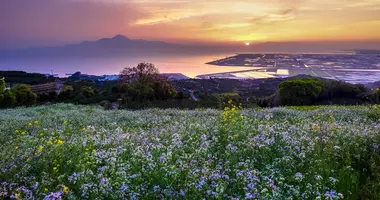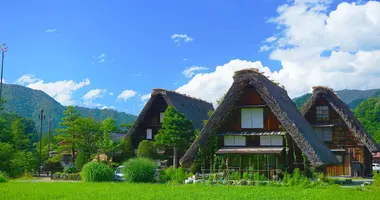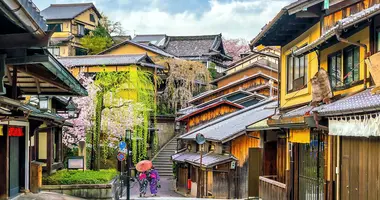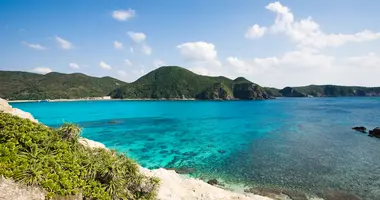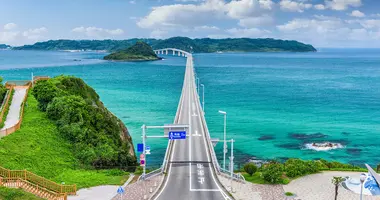Our 3-week tours through Japan
While there is no perfect duration for a trip to Japan, short stays can sometimes leave you with something to be desired. However, over the course of 3 weeks, visitors can discover the archipelago in a completely different way: explore regions intimately and in-depth, trek off the beaten track, and take the time to experience unique moments that there would be no time for during a shorter trip. What to see and what to do in three weeks in Japan?
The options are limitless, but Japan Experience is here to help!
Learn more about our 3-week tours in Japan
Discover our tour themes
21 days to fully enjoy traveling around the Japanese archipelago

Osaka Castle
©Nicholas Doherty
In three weeks, travel beyond the Golden Route (Tokyo, Osaka, Kyoto, and Hiroshima) and engage in a fully authentic journey. Witness the charms of the Japanese countryside firsthandwith its rolling rice fields, go hiking through the mountains of Gunma, or head to the less-ventured islands such as Shikoku and Okinawa. We have more than 150 activities to choose from that take place throughout the country. Photograph cranes in Hokkaido, take a boat ride in Miyajima, and bring back some unforgettable memories!
Prefer a more classic itinerary? Take advantage of this extra time to further explore Japan’s must-see sites. In Kyoto, our guided tour of the Arashiyama district will show you what 90% of travelers only get a small glimpse of. In Tokyo, get familiar with Japanese nightlife: our night tours will reveal a new side of the Shinjuku district. With our three-week tours in Japan, you’ll finally go off the beaten path!
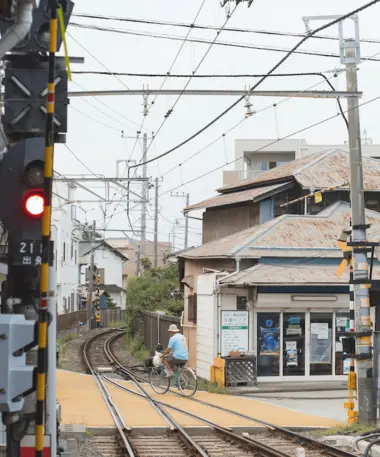
Local train tracks
© Ryutaro Tsukata
To make the most of your stay in Japan, vary your modes of transportation! Go by ferry to reach Kyushu’s hidden islands, or take a ride on the panoramic Shimakaze train to reach Ise-Shima from Kyoto; every journey can become a unique adventure!
Over the course of 3 weeks, a JR Pass will be fully worth it. From all the way north to all the way south, the pass will allow you to travel easily across the entire JR network, the largest railway network in the country.
If you’d prefer to fully take your time with a more leisurely itinerary, our rental houses are ideal for an extended stay in some of Japan’s most premier cities. Equipped with a kitchen and a washing machine, they offer optimal comfort—more practical than a long hotel stay. If needed, our on-site assistance is available 7 days a week!
With Japan Experience, travel to Japan like never before!
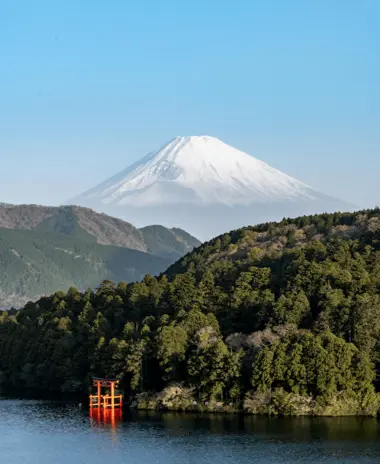
Fuji San - Hakone
© Jochen Meyer
Guided or self-guided, our tours adapt to your needs.
- Our self-guided tours: The “Archipelago from North to South” tour will take you to nine cities and regions for an immersive and intense discovery of Japan. For a journey at a more relaxed pace, opt for our “Slow Travel Japan” tour and take your time to fully enjoy each stage of your journey across the archipelago.
- Our guided tours: Accompanied by an experienced guide throughout your stay, discover a Japan full of diverse locales, between major urban centers and rural charm, with our “Cities and Countryside” tour. Our “Cities and Mountains” program will lead you along the country’s mountainous roads. Finally, our “Northern Landscapes” and “Off the Beaten Path” tours will appeal to all who want to discover Japan as thoroughly as possible.
Customer reviews of our tours
Frequently asked questions from our travelers
With over 40 years' experience serving travelers to Japan, we offer a variety of tours: tailor-made itineraries, small group tours, and self-guided packages. If these don't suit your needs 100%, our team of experts is on hand to help you plan the trip of your dreams! 4 advantages to booking a tour with Japan Experience:
- Expert advice: Our team of advisors will help you design the ideal itinerary, or suggest one of our pre-designed itineraries.
- Reliable assistance: If you have any problems during your trip, our bilingual Japanese team based in Tokyo is there for you. With no outside intermediaries, we'll be able to help you efficiently 7 days a week, even via WhatsApp.
- Saving time: Planning a trip to Japan isn't always easy. Thanks to our optimized itineraries and the answers we can provide to your questions, you'll be able to enjoy Japan to the full, without having to worry about organizing your trip.
- Unique experiences: Thanks to our local team, we have a unique network of activities, accommodations, restaurants and memorable places to see on our itineraries. As our team is always on the lookout for new things to discover, this network is constantly growing!
At Japan Experience, our tours are prepared and supported all by the same team driven by a single passion: making your dream trip to Japan a reality. This makes us the ideal partner for your trip to Japan
- The best insight. We focus 100% on travel in Japan. We know the country inside out and have our own team of experts based in Tokyo. What's more, our Paris team is made up exclusively of passionate people who have lived or traveled in Japan. Activities, hotels, train tickets...
- The trip tailor-made for you! Of course, our team will be happy to share its wealth of confidential addresses. On our site, you'll also find over 5,000 articles of travel advice on Japan, and we offer the best prices. Thanks to our specialization in travel to Japan, we've built up a unique network of local partners based on mutual trust. We always negotiate the best deals directly with our partners, to avoid price-gouging middlemen.
- A safe and secure trip guaranteed Our different teams all work in-house to plan your trip. With over 40 years' experience, several offices around the world, more than 5,000 travellers who put their trust in us every year, countless partnerships, and more, Japan Experience is a leader in Japan travel. Oh, and we're also the world's leading seller for the Japan Rail Pass!
Japan Experience takes care of air tickets on request for its tours. Departure cities are therefore flexible and you can leave from wherever you like: Paris, Brussels, or elsewhere. On a self-guided tour, you choose the date of your flight. For a small group tour, departure dates are fixed. Interested parties are advised to book their flights according to the departure date of the tour.
Each tour combines must-see attractions with lesser-known spots to offer you a unique experience. Cosmopolitan cities such as Tokyo and Osaka, as well as historic sites such as Kyoto and Nara.
Other key destinations include:
- Hakone/Mount Fuji with gorgeous views of the countryside
- Kyoto, the former capital with timeless charm
- Okinawa, the tropical archipelago off the southern coast of Japan
- Nara, Japan's first permanent capital famous for its history and roaming sacred deer
- Hiroshima, a symbol of peace and resilience that is host to some of the Japan’s most historic sites
Simple and easy, just book directly online on our website:
- You choose the tour of your choice, your departure date and the number of participants. Several options are available.
- Pay a deposit of 35% of the total amount online and confirm your booking.
- You receive an e-mail confirmation of your booking.
- You book your plane ticket, either with Japan Experience or by yourself (taking into account the times required for your tour to run smoothly).
- You pay the balance of your invoice up to one month before departure.
For more information about our tours or your booking, don 't hesitate to contact our advisers on + 44 (0)20 3514 6932 or contact@japan-experience.com.
You can also visit us in our London office.
We typically suggest the following times to visit Japan:
Spring (late February - late May): Spring”s mild temperatures are ideal for all kinds of activities. This is, of course, also the time when the sakura (cherry blossoms) bloom.
Summer (June - August): The heat quickly takes over from the rainy season at the end of June. Despite the heaat, you can still enjoy the many fireworks displays and open-air matsuri (traditional festivals).
Autumn (September - November): Temperatures are pleasant during this season and the momiji (maple leaves) glow gorgeous colors
Winter (December - February): Discover gorgeous winter landscapes, such as the Zen Garden of Kanazawa under the snow. January is defined by numerous festivities and the winter sports craze!
The most popular travel periods are:
- Early January: for New Year's Eve, when many businesses and activities are closed
- February: the plum blossom season and the 10 days around Chinese New Year are a big draw for tourists from Asia
- Late March - early April: cherry blossom season
- Late April - early May: "Golden Week" is a period of many public holidays. Many people in Japan go on vacation
- Mid-August: during the Obon Matsuri
- Late November: for momiji viewing
To avoid the crowds, Japan Experience recommends:
- February: outside the Chinese New Year period
- Mid-May - early June: to take advantage of mild weather and more affordable prices just before the rainy season
- September - early December: to enjoy mild temperatures and autumn leaves
This depends on the tour you choose for your trip. Some include breakfast only, such as our self-guided tours, while others, like our group tours, include 3 meals. Inclusions can also vary according to stage, with dinner included for a night in a ryokan, for example.
The price varies according to the number of nights and participants. It will also take into account the number of visits and activities organized. Expect to pay between 750 and 2600 euros per person for our self-guided tours, and between 2000 and 6500 euros per traveler for our small-group tours. To find out more about our rates and what's included on each tour, please visit our Japan tours page.
Breadcrumb
- Home
- Our 3-week tours through Japan
